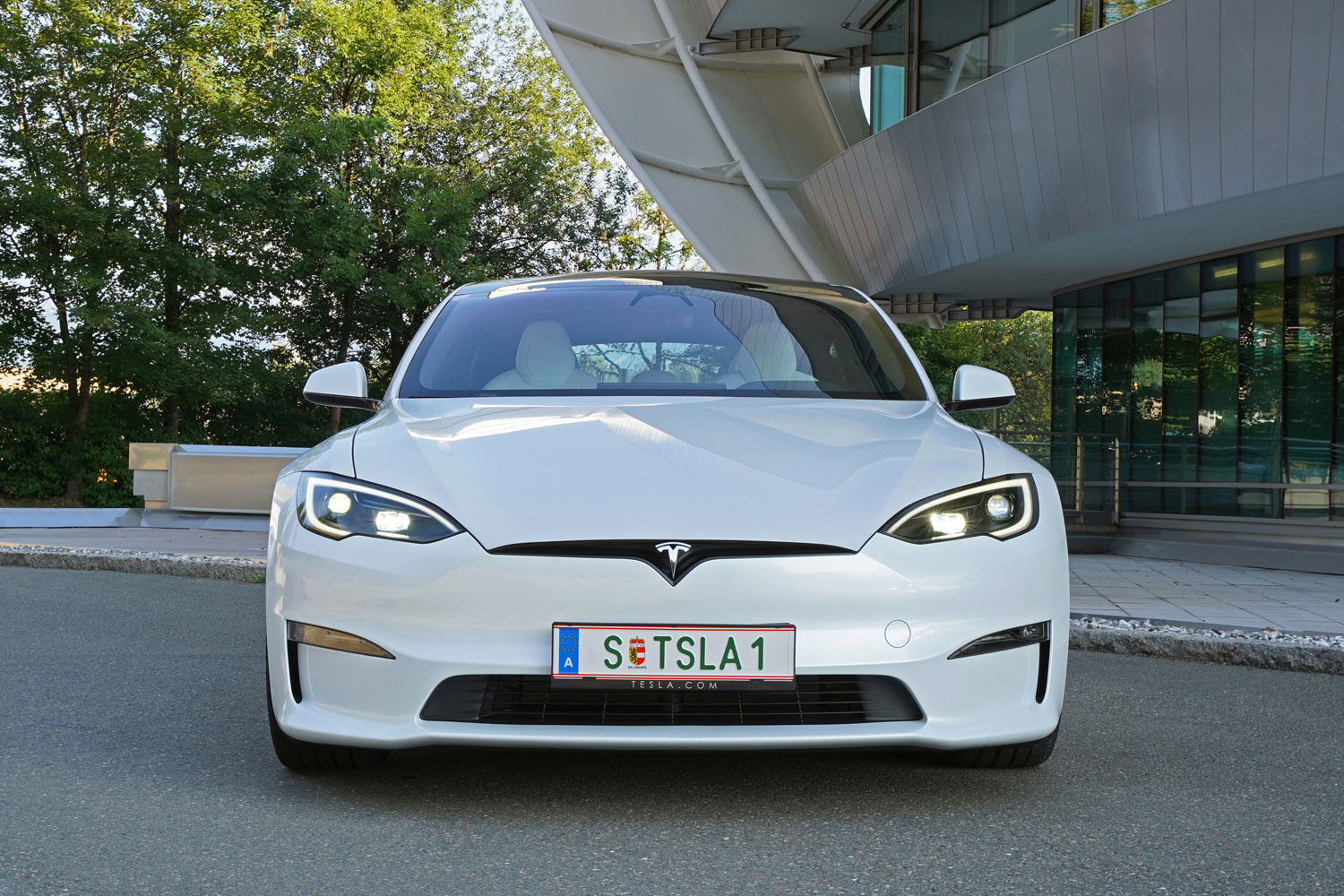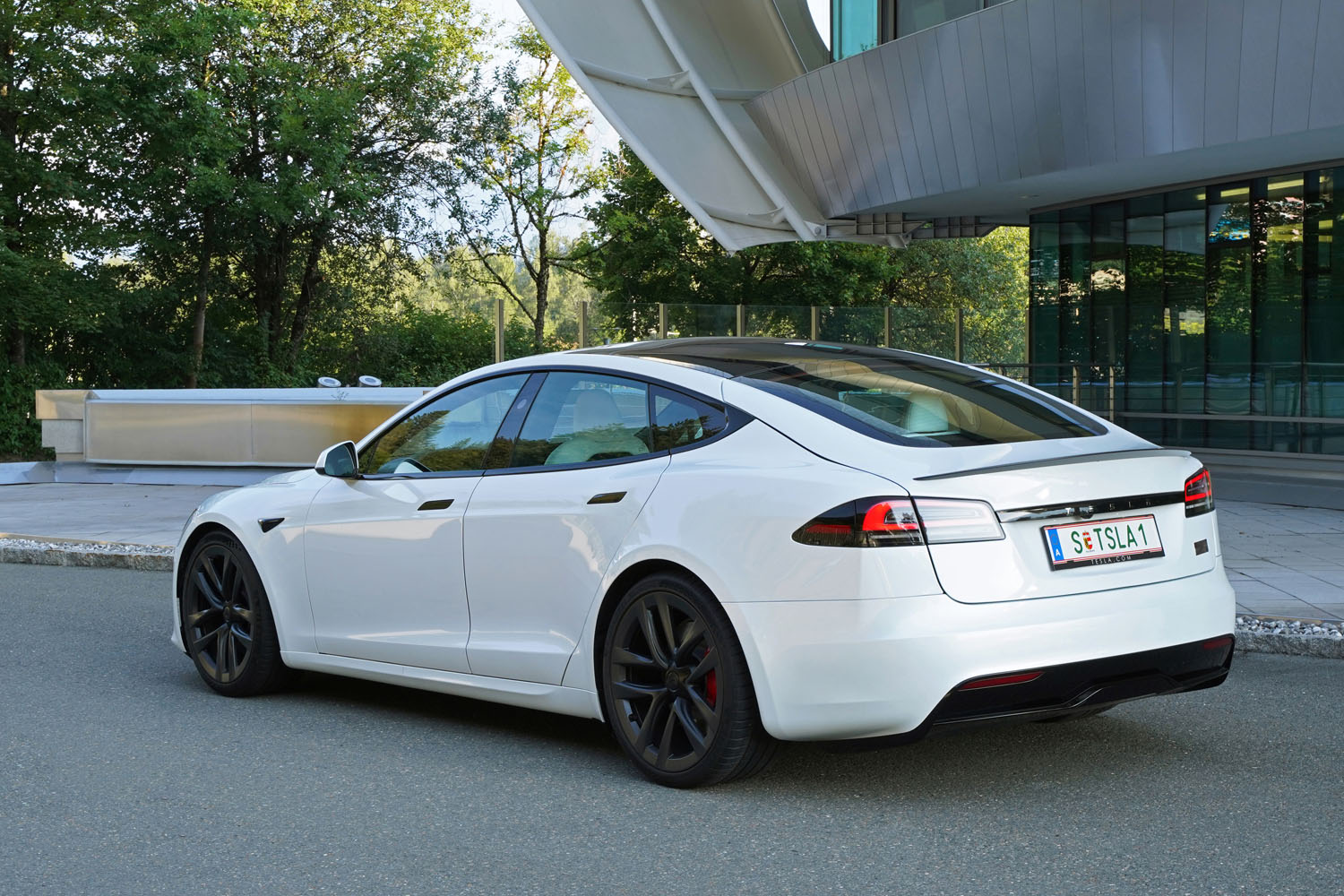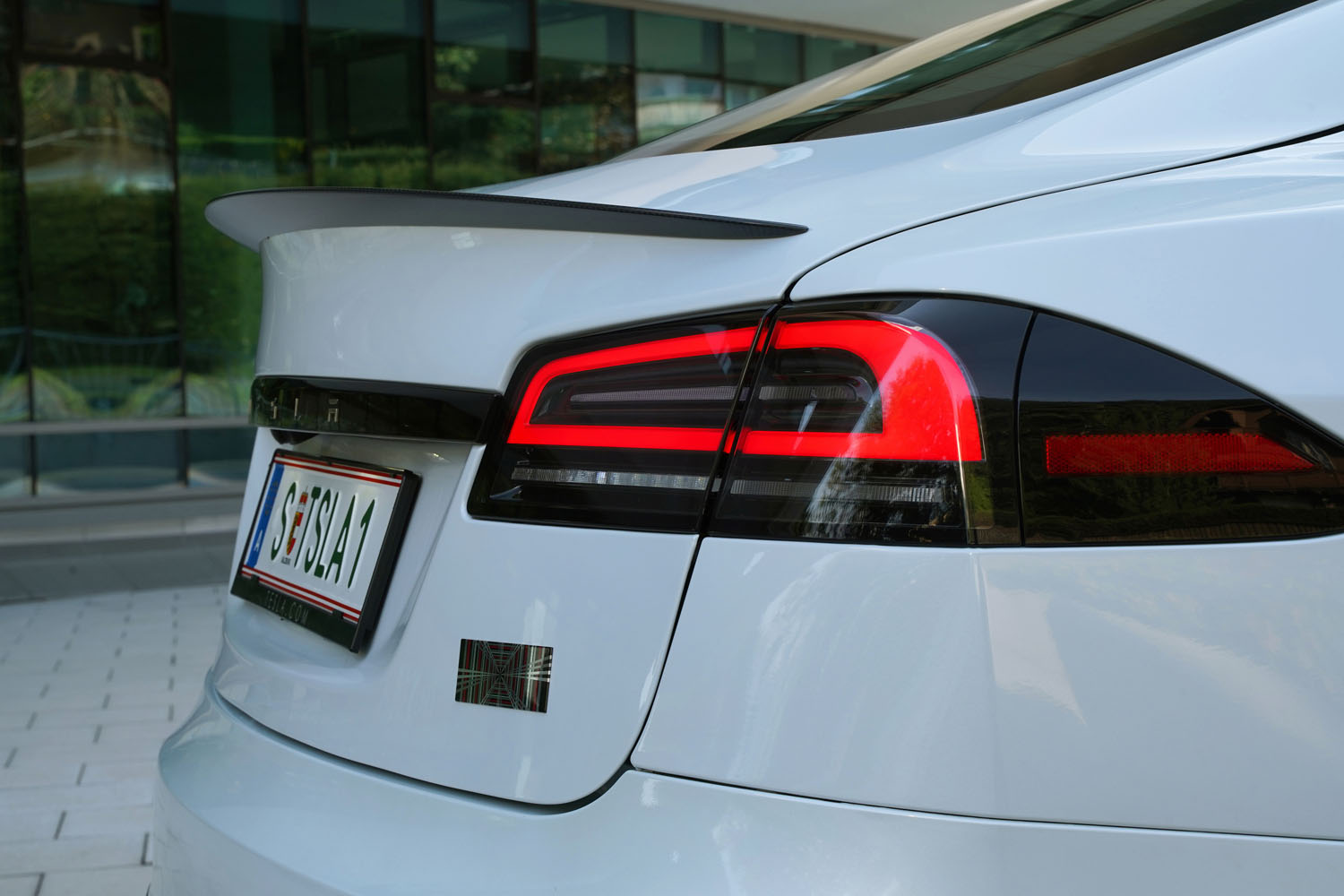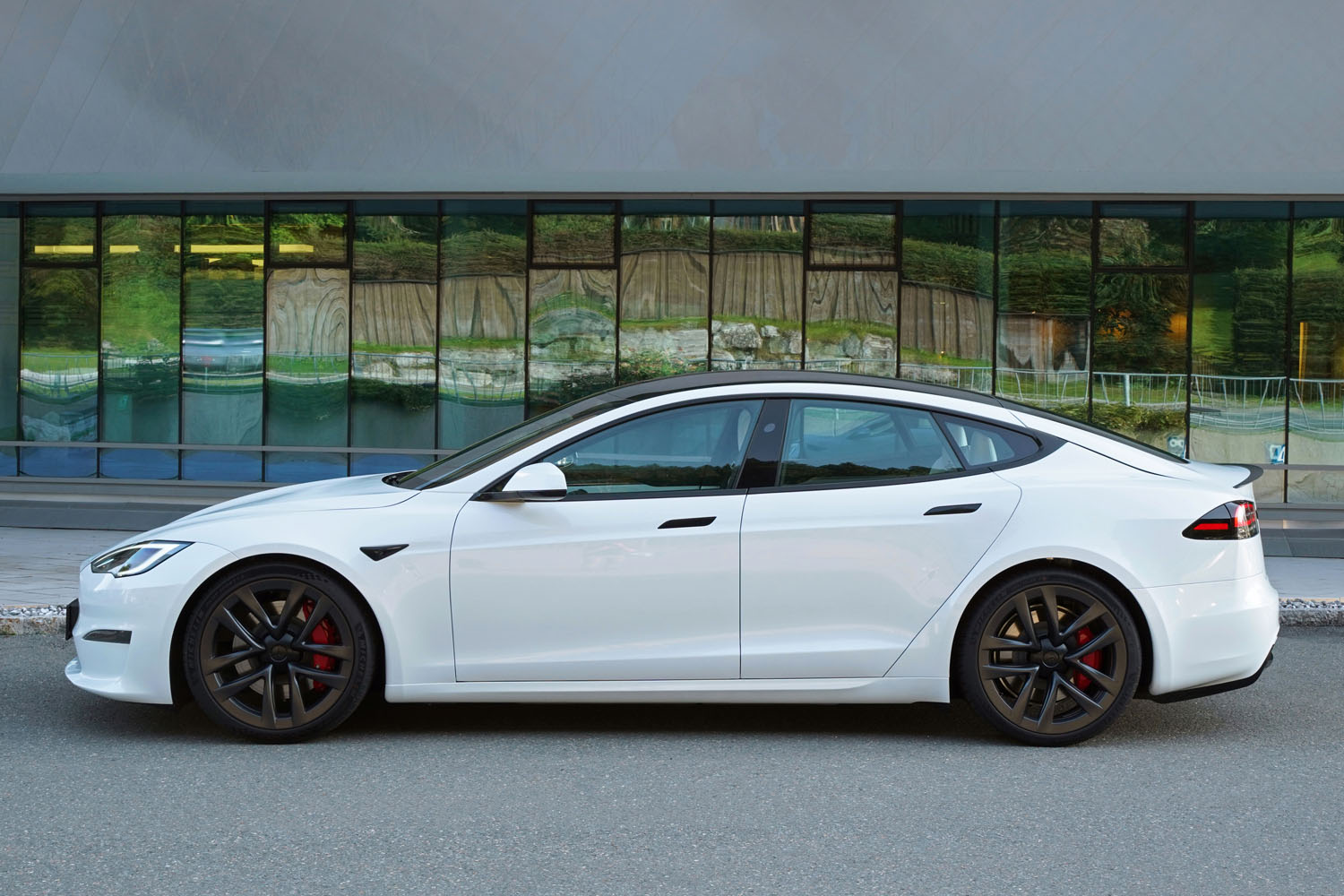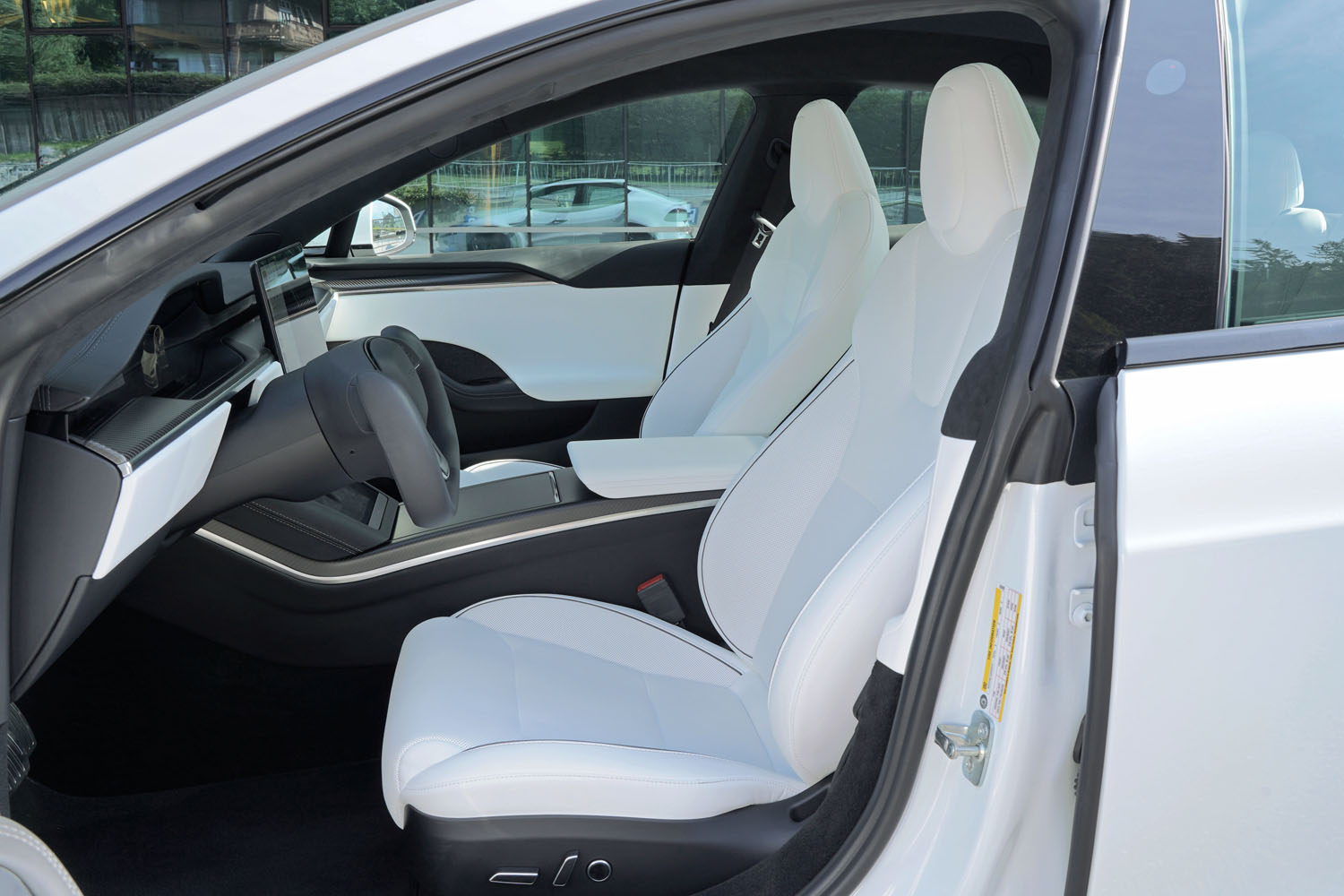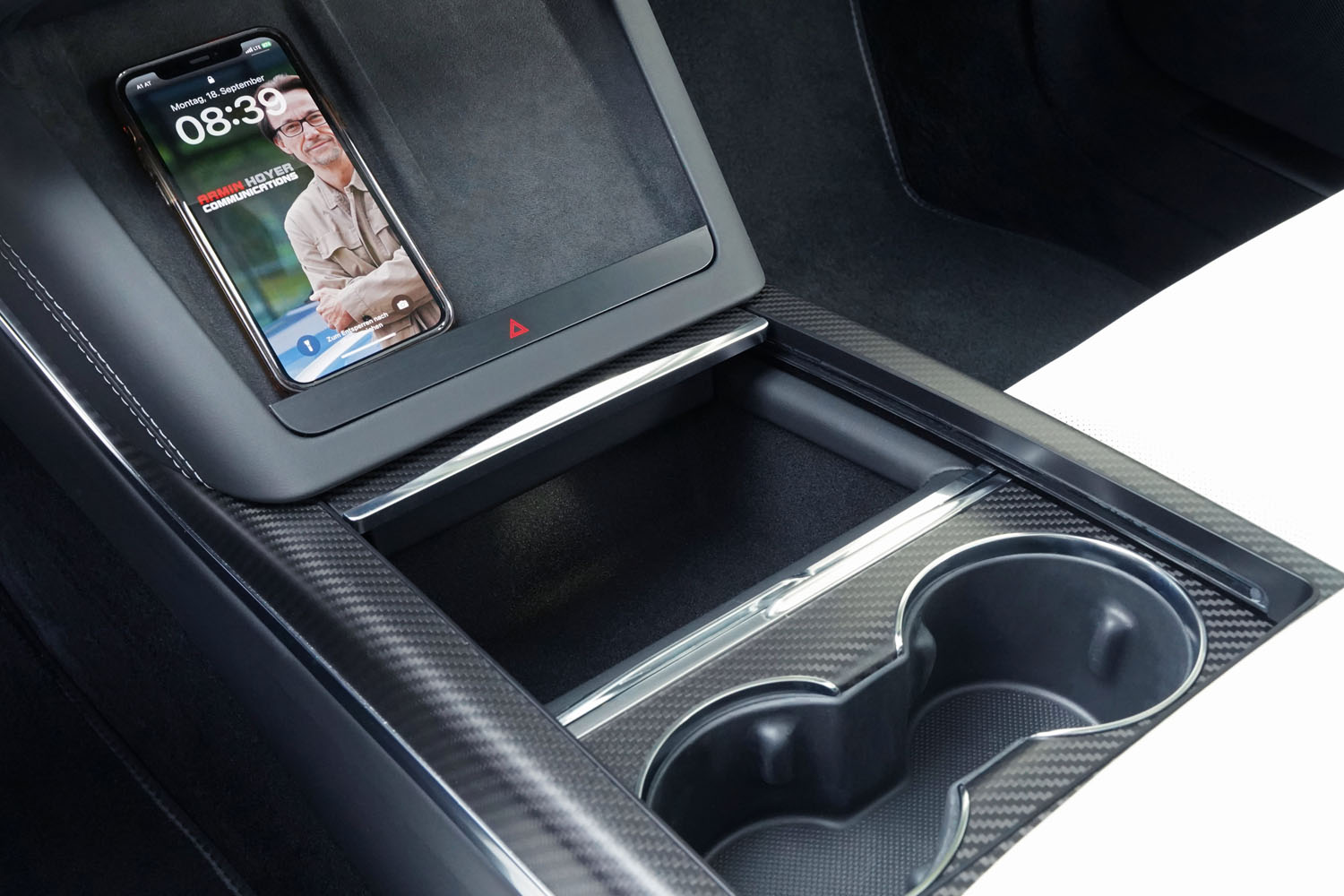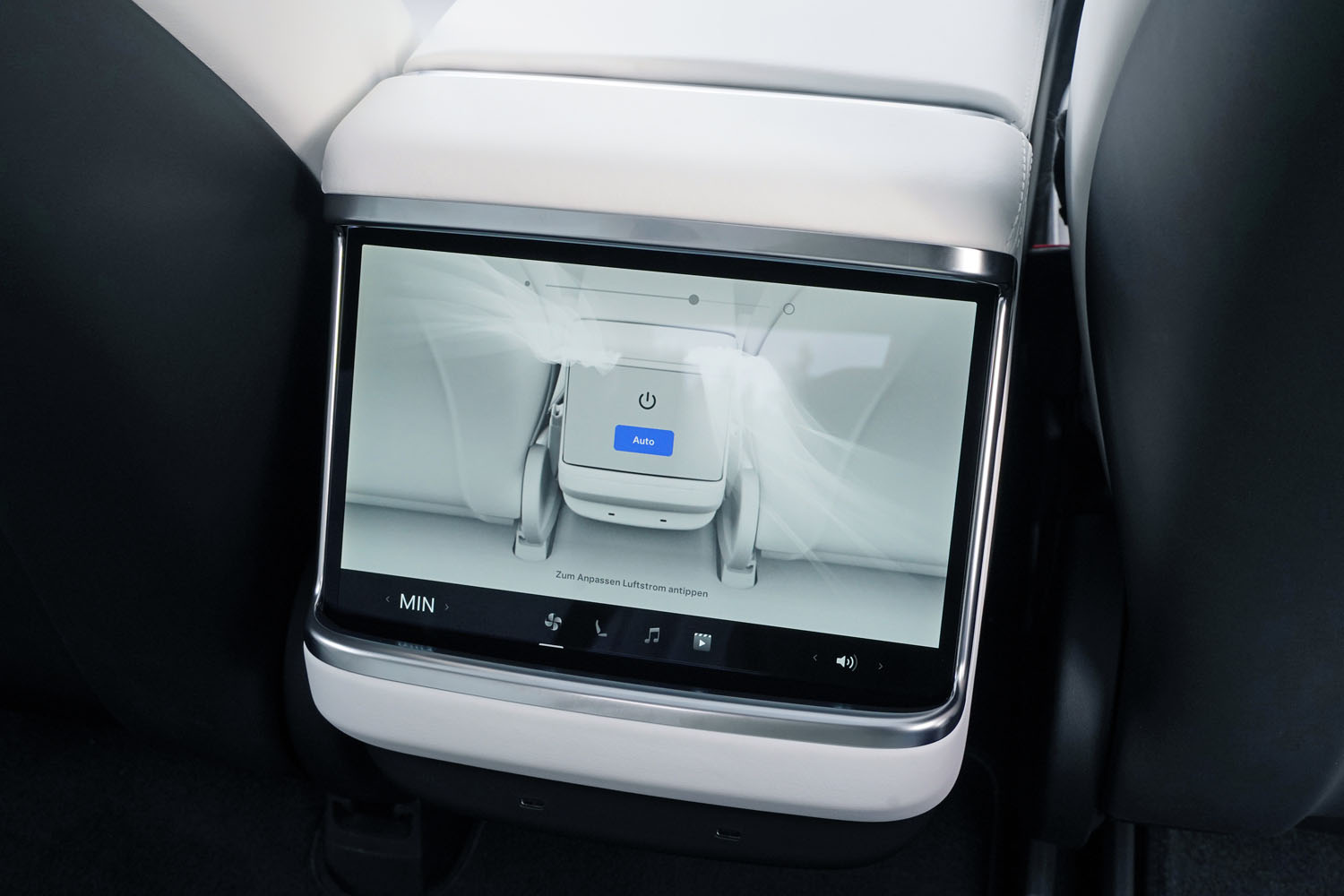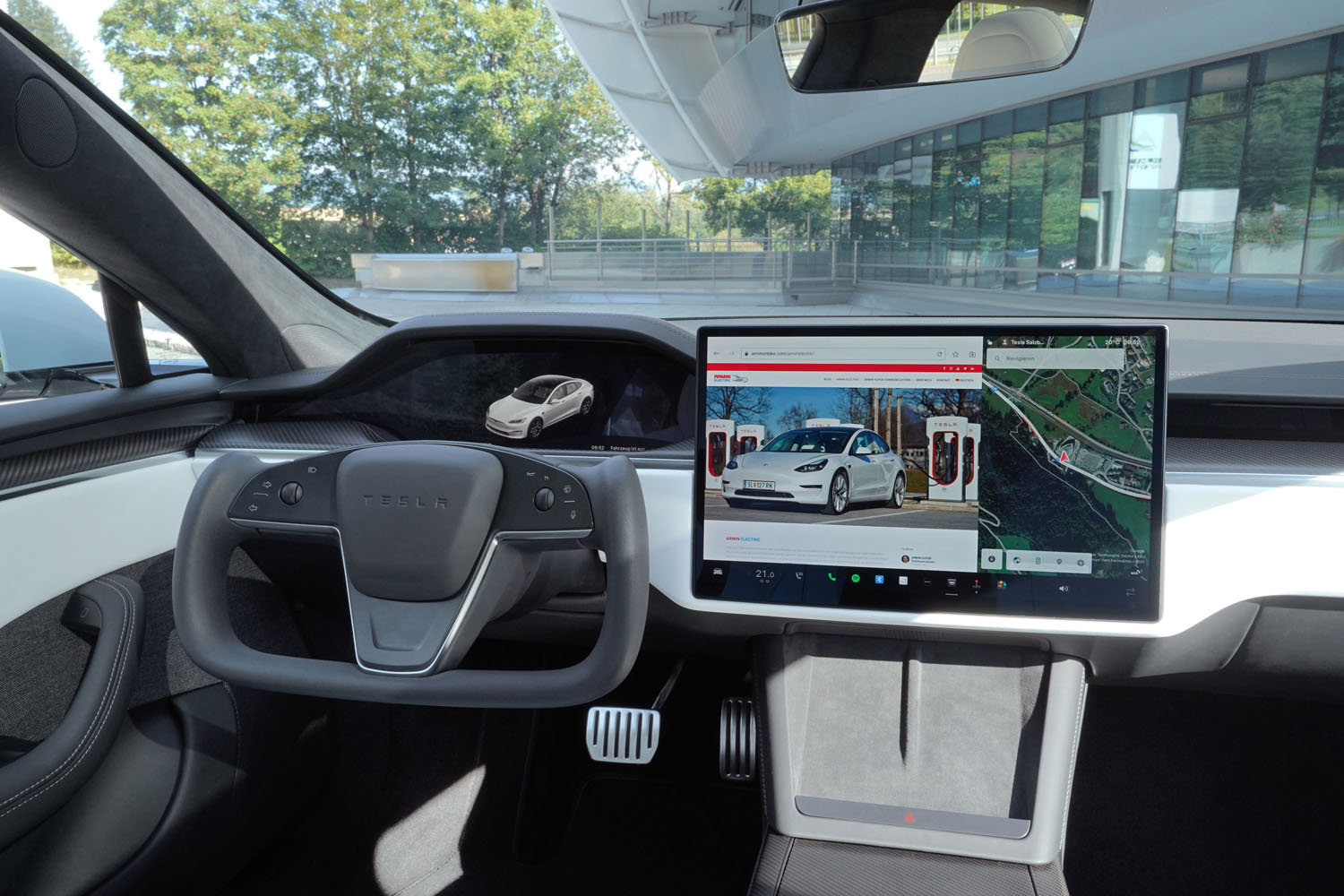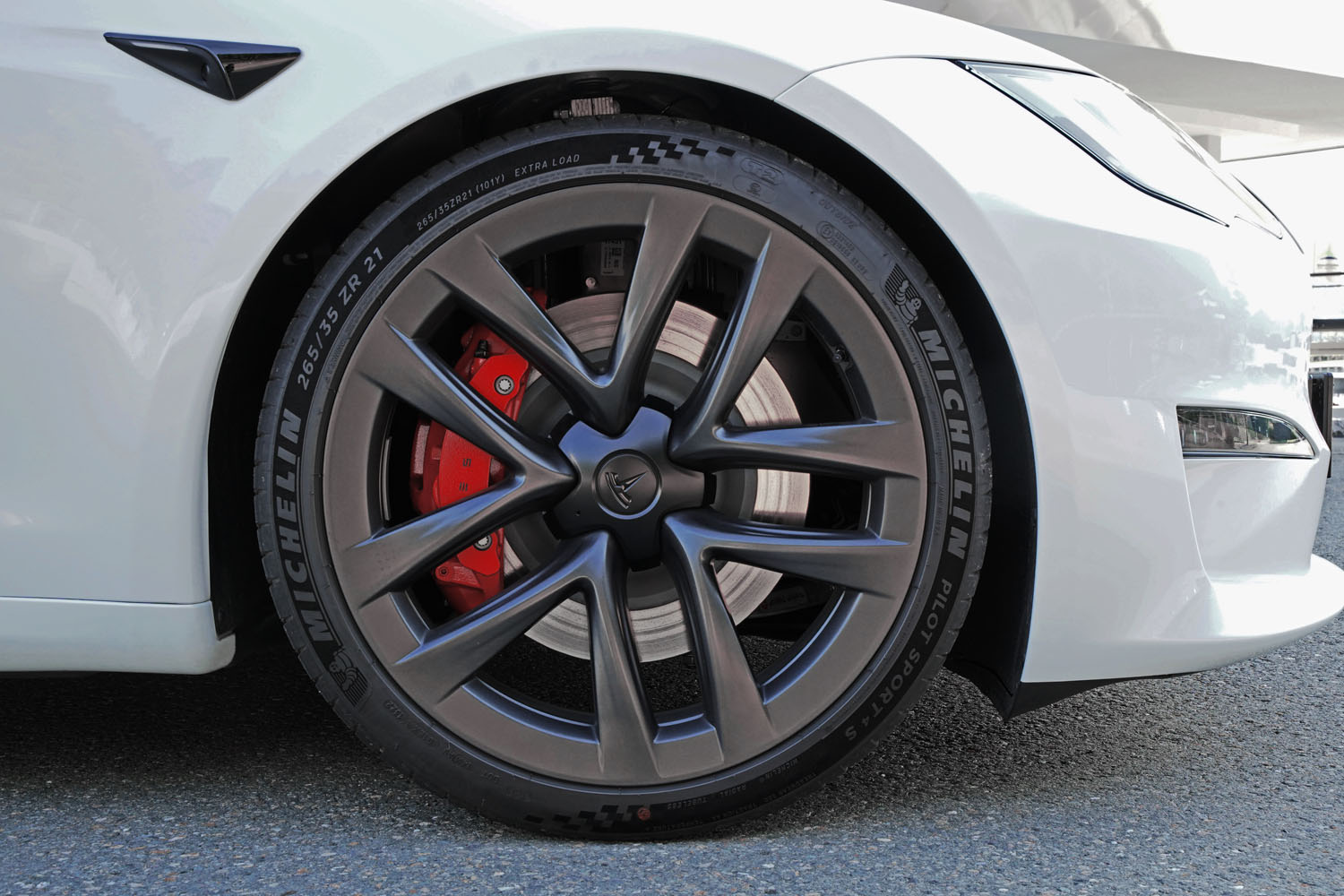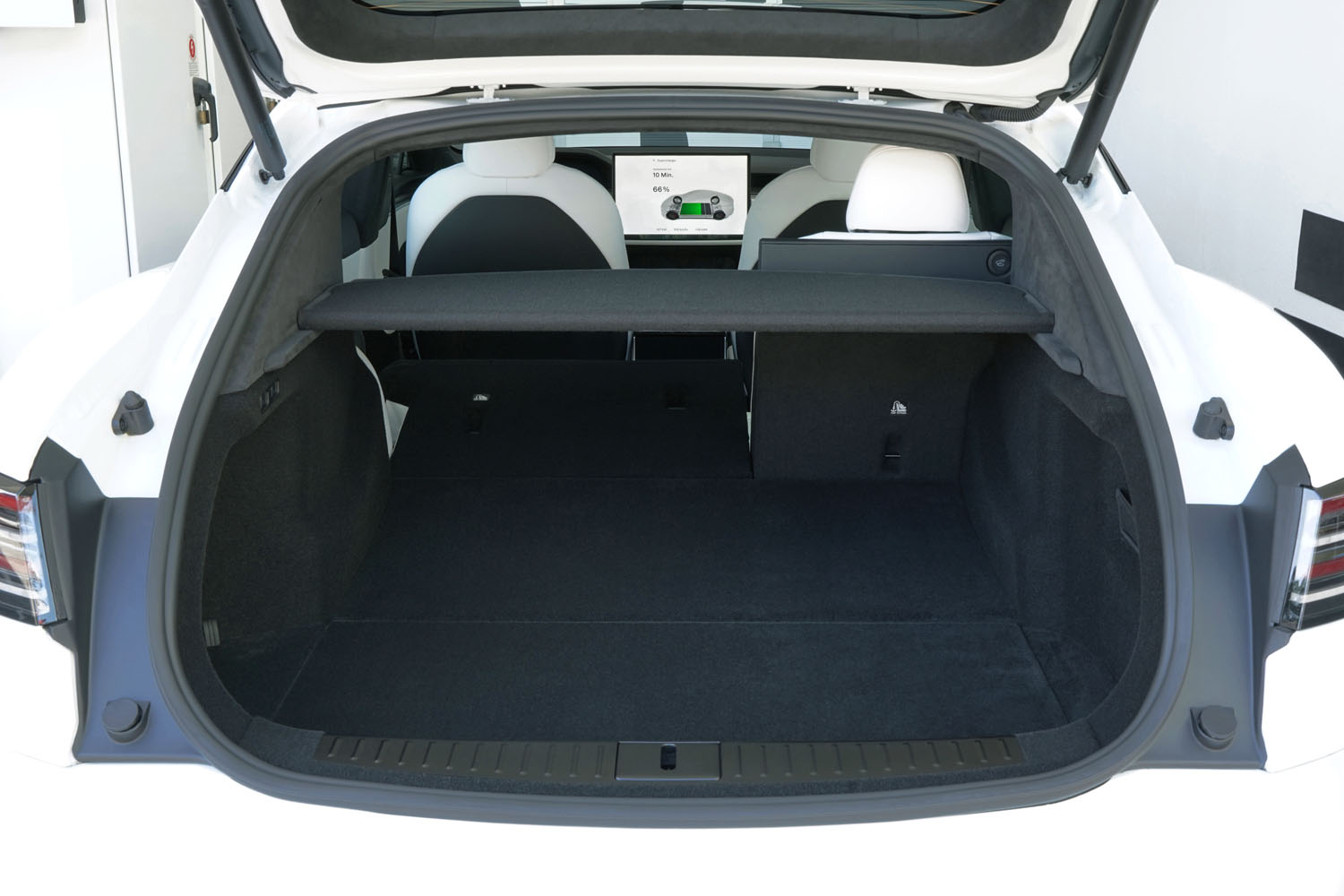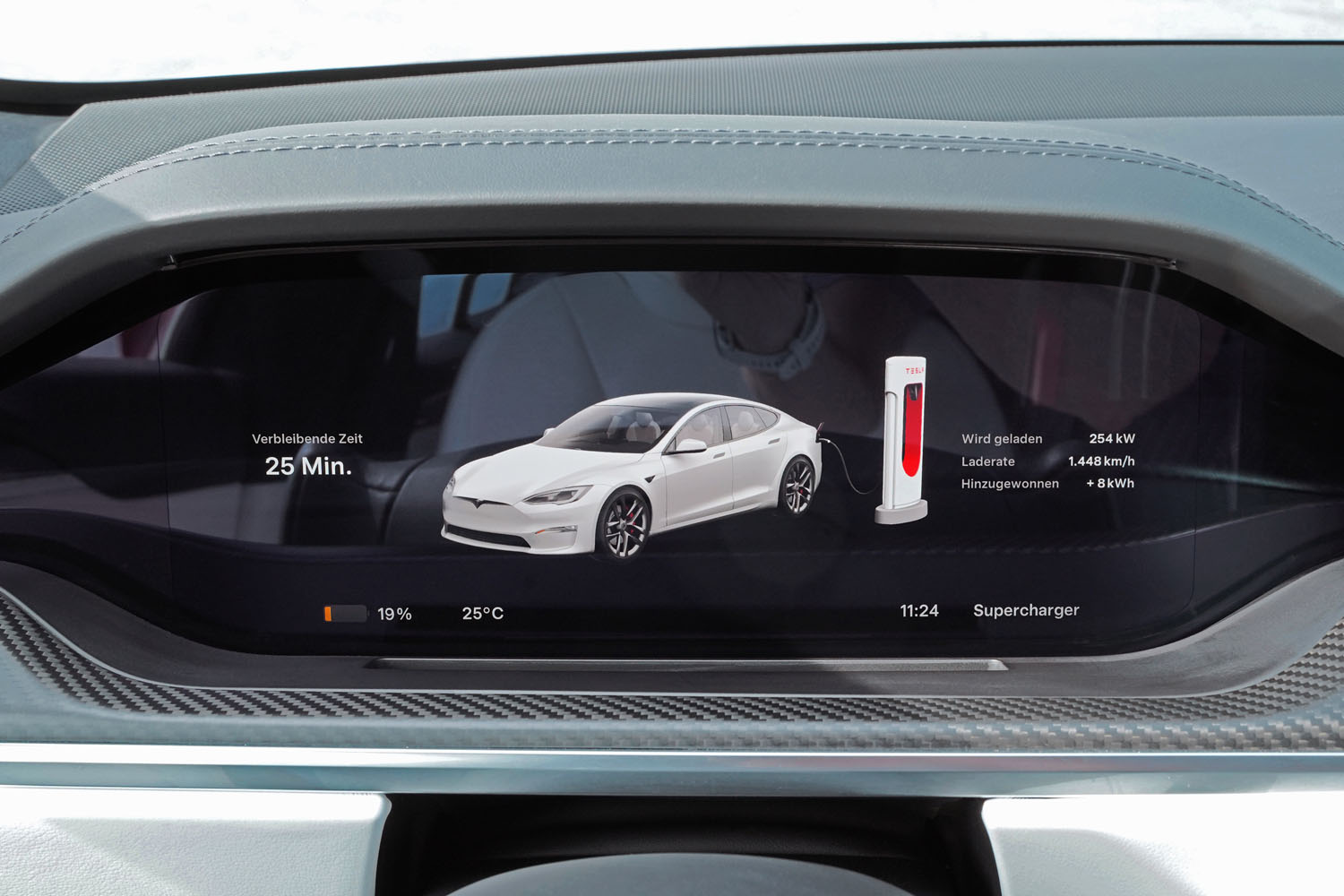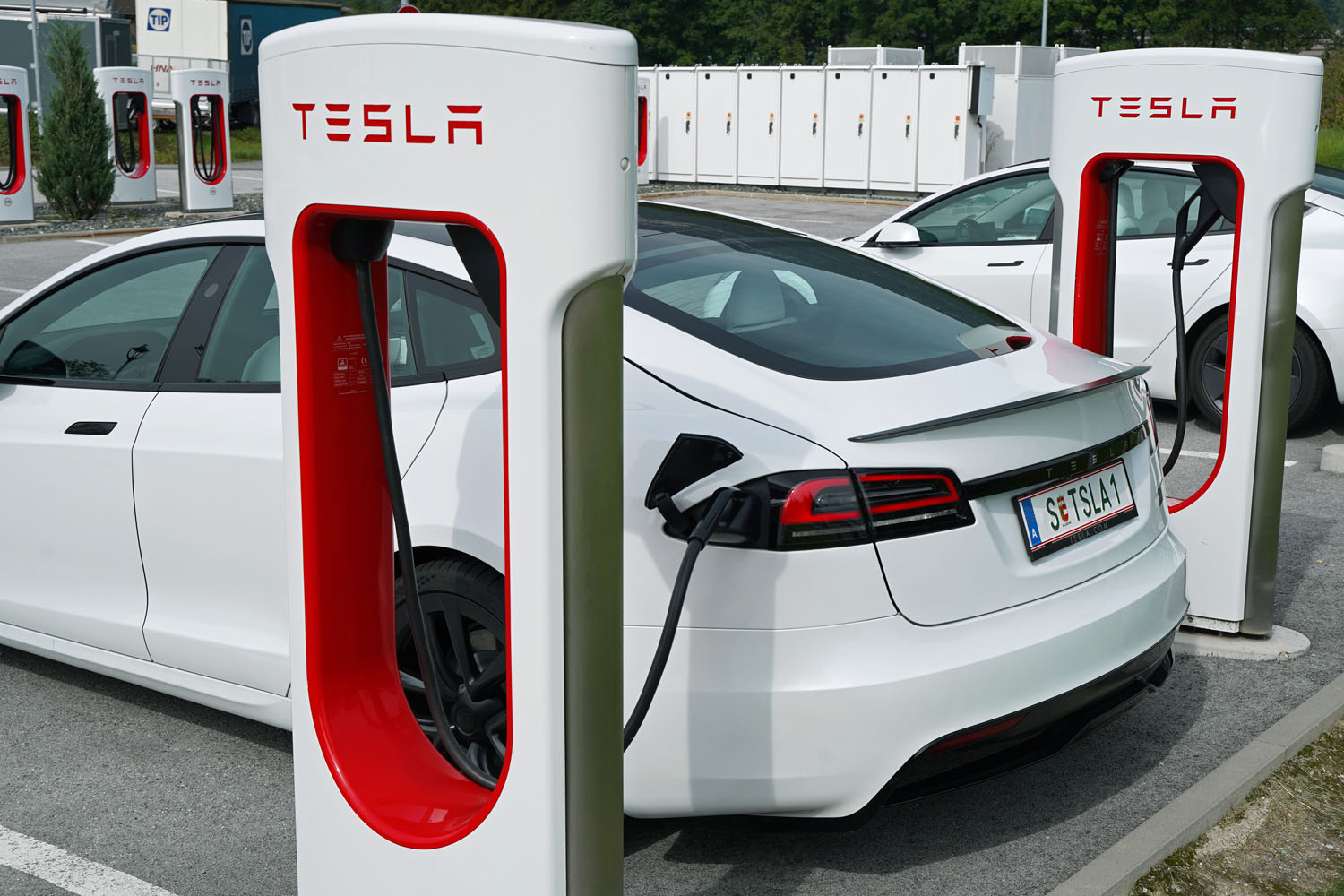Kitzbühel | Tyrol – After a two-year hiatus, the Tesla luxury sedan returned to the domestic market last December in the form of the new Model S Plaid. This is the electric car’s second facelift since it first hit the market in 2013. The changes focus primarily on the interior and enhancing efficiency…
The five-meter-long (roughly 16 foot-long) sports sedan stands impressively wide and with only a few centimetres of ground clearance. The Model S Plaid is likely the hottest thing that electric car pioneer Tesla currently has to offer. The black matte 21-inch wheels and the red brake callipers perfectly match the “Pearl White Multi-Coat” colour. Otherwise, the top model is kept very minimalist. Only a small carbon spoiler and the Plaid icon at the rear indicate what it is – the most powerful electric car to date. I got the chance to pick up my test vehicle at the Tesla Store Salzburg, and after getting a very friendly and professional explanation of the vehicle, I was ready to go.
OTHERWORLDLY INTERIOR
I’ve had the opportunity to sit in impressive test vehicles before, but nothing has ever blown me away quite like the extremely futuristic interior of the Tesla Model S Plaid. The first thing that catches the eye is the unusual yoke steering wheel: It looks extremely space-age – in fact, for a moment, I felt like I was sitting in a spaceship. Looks aside, though, it offers only limited practical use in everyday driving situations. For example, in traffic circles, I didn’t know how to grip it properly at the beginning, and when the road moves quickly, that problem can be quite dangerous. As the test progressed, I did like the relaxed hand support on the steering yoke on straight stretches. Still, the bottom line is that I would rather go for the standard round steering wheel.
There is one special feature I could definitely get used to. The new Model S comes without steering column switches and, except for a few on the steering wheel, without switches and buttons. Even the typical air vents are gone – airflow is adjusted by swiping on the central 17-inch touchscreen. After a while, I got used to the fact that almost all functions are controlled by the large screen.
The seats upholstered in white imitation leather look very classy in tandem with the black footwell and the high-quality trim parts. The plentiful storage compartments are covered with soft material; hard plastic is nowhere to be found here.
With the 960-watt audio system running through 22 speakers, Tesla’s engineers have achieved something truly special. Never before have I had the pleasure of experiencing such high-quality sound in a car. There is also now a central screen in the back row of seats, which is used for climate control and streaming videos. But now to the big question: How do you actually drive off in the futuristic space glider? Simply swipe upwards on the left of the display and the forward gear is engaged. It really couldn’t be more intuitive or practical.
GALACTIC ACCELERATION
Thinking about how Tesla has managed the balancing act between super sports car and comfortable touring sedan, it’s hard not to be impressed. The extensively adjustable air suspension, which literally felt as though I was floating over the roads, was a major contributing factor. Three acceleration options offer a wide range of driving modes, from gentle to extreme.
To summon the incredible maximum power of 750 kW (1,020 hp), I went into track strip mode. After a few minutes of preconditioning the battery, the display read “peak power ready.” The brake and gas pedals pressed simultaneously and the front lowered into what is known as the cheetah position. After releasing the brake, I was catapulted forward by the three electric motors with carbon-sheathed rotors. After just 2.4 seconds, the Model S Plaid had completed the sprint from zero to 100 with such ease that it left me awestruck.
STRESS-FREE CHARGING AND TRAVELING
Tesla Superchargers offer the most convenient charging solution. Drive up, plug in, and start fast charging. At a 250 kW Supercharger in Langkampfen, I reached a maximum charging power of 254 kW. The 100 kWh battery (95 kWh net) charged from 10 to 80 percent in 31 minutes. At the older generation Supercharger in Kitzbühel, which allows a maximum of 150 kW charging power, I was able to fill the battery from six to 80 percent in 42 minutes alongside another charging Tesla with a maximum of 118 kW. 18 kWh/100 km was sufficient for the Model S Plaid on country roads. Only at highway speeds does this rise to over 20 kWh/100 km. In practice, this means a range of 400-500 kilometres (about 250-310 miles) at low highway speeds depending on how you drive it.
The Tesla Model S Plaid starts at 109,900 euros in Austria and Germany and can be direct ordered online ($89,990 in the US). The test vehicle cost exactly 123,070 euros ($103,490 in the US). You can get more information at a personal consultation in a Tesla Store near you, or schedule a test drive using this link.
Text and photos: Armin Hoyer – arminelectric.com
Translation from German to English: Ethan Shenhar


